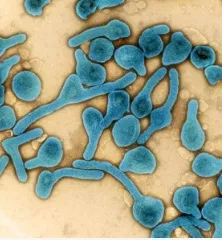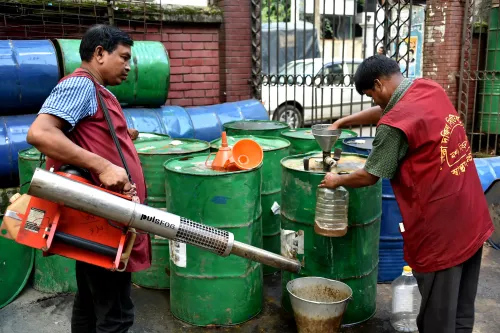How is South Sudan Responding to the Marburg Outbreak in Ethiopia?

Synopsis
Key Takeaways
- Heightened border surveillance in South Sudan.
- No confirmed cases reported in the country.
- Public Health Emergency Operation Centre reactivated.
- Rapid response teams deployed to high-risk areas.
- Citizens encouraged to report suspected symptoms.
Juba, Nov 19 (NationPress) The government of South Sudan has heightened its alertness along its borders in response to the recent outbreak of the Marburg virus in neighboring Ethiopia.
Health Minister Sarah Cleto Rial announced that the government, in collaboration with the World Health Organization and other partners, has ramped up surveillance, preparedness, and response strategies to avert any potential importation and transmission of the virus.
"The Ministry of Health assures the public that no confirmed cases have been reported in South Sudan," Cleto stated during a press conference in the capital, Juba, on Monday evening.
She encouraged citizens to stay calm and promptly report any suspected symptoms of this serious hemorrhagic illness to their nearest health care facilities.
This proactive measure follows the Ethiopian government’s declaration of a Marburg virus outbreak on November 14 in the town of Jinka, located close to the border with South Sudan.
The South Sudanese administration has reactivated the Public Health Emergency Operation Centre (PHEOC) in Juba to enhance monitoring, screening, risk assessment, and the identification of priority areas, while conducting evaluations at both national and state levels, according to Cleto.
Mabior Kiir Kudior, the chief of planning and information at the PHEOC, reported that a rapid response team has been deployed to high-risk regions, including Kapoeta East, Akobo, Pochala, and the Greater Pibor Administrative Area, as reported by the Xinhua news agency.
"We have made prompt decisions, including the formulation of a 72-hour response plan and a travel advisory to guide the public and travelers on necessary precautionary measures for our safety," Kudior emphasized.
The Marburg virus disease is a severe illness that can have a fatality rate of up to 88 percent, although this can be reduced with timely and effective patient care.
This disease was first identified in 1967 during two simultaneous outbreaks in Marburg and Frankfurt, Germany, and in Belgrade, Serbia. The outbreak was linked to laboratory work involving African green monkeys imported from Uganda. Since then, outbreaks and isolated cases have been reported in various countries, including Angola, Democratic Republic of the Congo, Equatorial Guinea, Ghana, Guinea, Kenya, Rwanda, South Africa, Tanzania, and Uganda.









